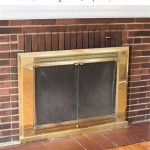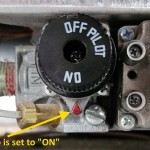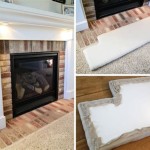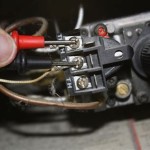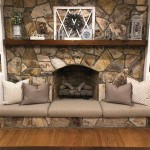Painted Electric Fireplace: Aesthetics and Functionality Combined
Electric fireplaces have become increasingly popular as a convenient and versatile heating solution for homes. They offer the ambiance of a traditional fireplace without the need for venting, gas lines, or constant maintenance. One significant advantage of an electric fireplace is the ability to customize its appearance, and painting is a key method for achieving this. This article explores the various aspects of painted electric fireplaces, including the reasons for painting, the appropriate paints and techniques, and the potential benefits and considerations associated with this customization option.
Electric fireplaces are often integrated into a mantel or surround, which becomes a focal point in the room. The ability to alter the color and finish of these elements through painting allows homeowners to perfectly match their existing décor or create a completely new aesthetic. Painting can transform a dated or uninspired fireplace into a stylish and modern feature, enhancing the overall appeal of the space. The cost-effectiveness of painting, compared to replacing the entire fireplace unit or surround, makes it an attractive option for updating a room's appearance.
Reasons for Painting an Electric Fireplace
There are several compelling reasons why individuals choose to paint their electric fireplaces. A primary motivator is to update the look and feel of the fireplace surround. Over time, colors and styles can become outdated, and a fresh coat of paint can instantly modernize the unit. This frequently involves transitioning from older wood finishes to more contemporary colors such as white, gray, or even bold accent colors.
Another reason for painting is to match the fireplace to new or existing décor. When redecorating a room, the existing fireplace surround may clash with the new color scheme or furniture. Painting allows for seamless integration of the fireplace into the updated design. Furthermore, painting can be used to disguise imperfections or wear and tear on the fireplace surround. Scratches, dents, or fading can be effectively concealed with a fresh coat of paint, restoring the unit to its original appearance or even improving upon it.
Beyond aesthetic considerations, painting can also be a protective measure. Certain types of paint, particularly those formulated for wood or metal, can provide a protective barrier against moisture, dust, and other environmental factors that can damage the fireplace surround over time. This is especially relevant in areas with high humidity or where the fireplace is exposed to frequent use.
Selecting the Right Paint and Techniques
Choosing the correct type of paint is paramount for a successful and long-lasting finish. The material of the fireplace surround – whether it is wood, metal, or a composite material – will dictate the type of paint that should be used. For wooden surrounds, a primer and paint specifically designed for wood are essential. Latex-based paints are a common choice due to their durability, ease of application, and low odor. Oil-based paints provide a harder finish but require more careful application and cleanup.
Metal surrounds require a different approach. A rust-inhibiting primer should be applied first to prevent corrosion. Paints formulated for metal surfaces, such as enamel paints or specialized metal paints, are recommended. These paints are designed to adhere to metal surfaces and withstand heat without blistering or peeling. In the case of composite materials, it is important to consult the manufacturer's recommendations for the appropriate type of paint.
Proper preparation is just as crucial as the paint selection. The surface must be thoroughly cleaned and sanded to ensure proper adhesion. Any loose paint, dirt, or grime should be removed. Sanding creates a slightly rough surface, allowing the primer and paint to grip effectively. After sanding, the surface should be wiped down with a tack cloth to remove any remaining dust. Applying a primer is generally recommended, as it provides a uniform base for the paint and improves its adhesion. Multiple thin coats of paint are preferable to a single thick coat, as this will result in a smoother and more durable finish. Allowing each coat to dry completely before applying the next is essential.
Regarding application techniques, using high-quality brushes or rollers is recommended for achieving a professional-looking finish. For intricate details or hard-to-reach areas, a smaller brush may be necessary. Spray painting can also be an option, particularly for larger surfaces, but it requires careful masking to protect surrounding areas from overspray. Regardless of the application method, it is important to work in a well-ventilated area and to follow the manufacturer's instructions for the paint and primer being used.
Benefits and Considerations of Painting
Painting an electric fireplace offers several benefits beyond aesthetic improvements. It can significantly extend the lifespan of the fireplace surround by providing a protective layer against environmental damage. A well-maintained paint finish can prevent moisture from seeping into the material, preventing rot or corrosion. It can also improve the resale value of the home, as a well-maintained and stylish fireplace is an attractive feature for potential buyers.
The ability to customize the appearance of the fireplace to match personal preferences or changing trends is another significant advantage. Painting allows for flexibility and adaptability, enabling homeowners to easily update the look of their fireplace without incurring the expense of replacing the entire unit. This is particularly useful for those who enjoy redecorating their homes frequently or who want to keep up with the latest design trends.
However, there are also several considerations to keep in mind when painting an electric fireplace. The most important is to ensure that the paint does not interfere with the functionality of the fireplace. It is crucial to avoid painting any areas that house electrical components or that are designed to dissipate heat. Blocking ventilation openings or covering electrical connections can create a fire hazard or damage the unit. Furthermore, it is essential to select paints that are heat-resistant and will not emit harmful fumes when exposed to heat.
Proper preparation and execution are critical for achieving a satisfactory result. Rushing the process or using inferior materials can lead to a poor finish that is prone to chipping, peeling, or fading. If unsure about the process, it may be best to consult with a professional painter or contractor to ensure that the job is done correctly and safely. The long-term durability and aesthetic appeal of the painted fireplace will depend on the quality of the materials used and the care taken during the painting process.
Maintenance of the painted surface involves regular cleaning to remove dust and grime. Mild soap and water are generally sufficient for cleaning painted fireplace surrounds. Abrasive cleaners or harsh chemicals should be avoided, as they can damage the paint finish. Minor scratches or chips can be touched up with a small amount of paint, ensuring that the repaired areas blend seamlessly with the surrounding surface. With proper care and maintenance, a painted electric fireplace can remain a beautiful and functional focal point in the home for many years to come.

Painted Electric Fireplace Harbour Breeze Home

Before And After Electric Fireplace Makeover With Chalk Paint Primer No Sanding Yay Diy

The One Who Swallowed Universe Hand Painted Electric Fireplace By Atelier Miru For At Pamono

Easy Diy Marble Hearth And A Fireplace Makeover The Painted Hive

How To Paint A Laminate Fireplace Momadvice

Easy Diy Marble Hearth And A Fireplace Makeover The Painted Hive

Before After Fireplace Facelift Stylish Patina

Stunning Fireplace Makeover Holly Grace

Electric Fireplace Gets An Update With Chalk Paint

Easy Diy Marble Hearth And A Fireplace Makeover The Painted Hive
Related Posts

